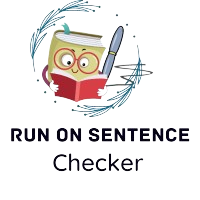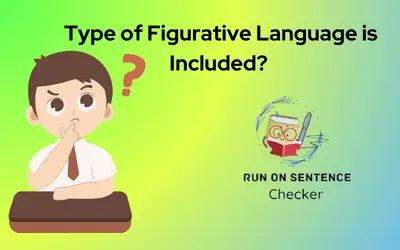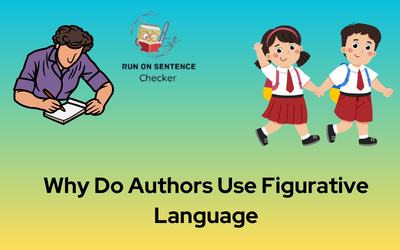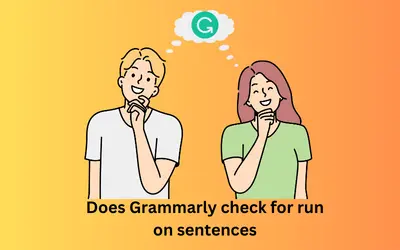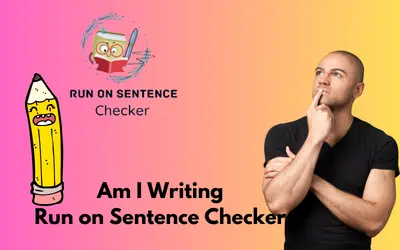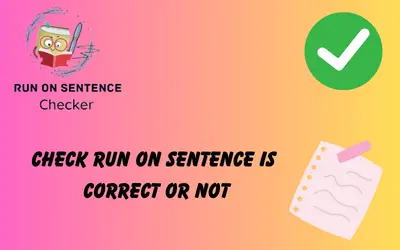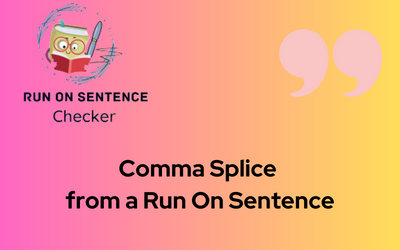In writing Comma splice, a term frequently encountered in the realm of punctuation, plays a crucial role in maintaining the integrity and clarity of written communication for What is Comma Splice in Run On Sentence. Here, we will delve into the intricacies of comma splices, exploring when to use them, how to rectify them, and the broader implications for effective writing.
Understanding Comma Splice in Run On Sentence
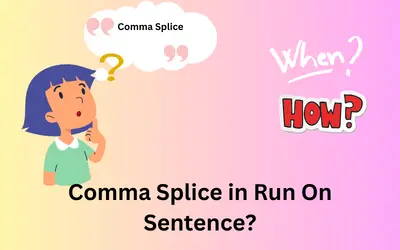
Before we explore the nuances of comma splices in run on sentence, it’s imperative to grasp the concept of a run-on sentence. A run-on sentence occurs when two independent clauses are joined without proper punctuation or conjunctions. Comma splices specifically involve connecting these clauses with a mere comma, violating the established rules of punctuation.
Comma splices can be tricky, but let’s unravel the mystery with a concrete example:
Original Sentence: “The sun was setting, I had to hurry to catch the train.”
In this instance, we have two independent clauses: “The sun was setting” and “I had to hurry to catch the train.” They’re both complete thoughts that could stand alone as sentences.
Comma Splice Identified: “The sun was setting, I had to hurry to catch the train.”
The problem here is the comma trying to play referee between these two independent clauses. To fix this, we can employ one of the strategies we discussed:
Revised Sentences:
- Using a Coordinating Conjunction:
- “The sun was setting, so I had to hurry to catch the train.”
- Employing a Semicolon:
- “The sun was setting; I had to hurry to catch the train.”
- Restructuring with a Comma and Coordinating Conjunction:
- “The sun was setting, and I had to hurry to catch the train.”
- Subordination:
- “Because the sun was setting, I had to hurry to catch the train.”
- Sentence Splitting:
- “The sun was setting. I had to hurry to catch the train.”
Each of these revisions eliminates the comma splice while maintaining the clarity and coherence of the message. The choice among these options depends on the writer’s intent and the desired flow of the narrative
Steps for Fixing a Comma Splice in a Run-On Sentence
Addressing a comma splice within a run-on sentence requires strategic correction. Follow these steps to rectify the error and enhance the overall structure of your writing:
- Identify Clauses: Recognize independent clauses in the run-on sentence.
- Understand Relationship: Determine the connection between the independent clauses.
- Add Conjunctions: Introduce coordinating conjunctions for proper linkage.
- Use Semicolons: Replace the comma with semicolons for a stronger connection.
- Combine with Commas: If closely related, use a comma and coordinating conjunction.
- Subordinate a Clause: Transform one clause into a subordinate form.
- Consider Splitting: If needed, split the sentence into two for clarity.
Understanding and Correcting Comma Splice in Run-On Sentences:
When it comes to effective writing, steering clear of the common pitfall known as a “comma splice in run-on sentences” is paramount. This guide provides insights into identifying, understanding, and fixing comma splices to elevate the clarity of your writing.
1. Recognizing the Comma Splice in Run-On Sentences
Before delving into corrections, it’s crucial to identify comma splices within run-on sentences. A comma splice occurs when two independent clauses are erroneously connected by a comma alone. Understanding this error lays the foundation for precise corrections.
2. Implications of Comma Splice on Clarity
Comma splices can disrupt the natural flow of your writing, leading to ambiguity and confusion. Recognizing the implications of this error underscores the importance of addressing it to enhance overall clarity and coherence.
3. Addressing Comma Splice: Techniques and Strategies
To correct comma splices effectively, consider techniques such as employing coordinating conjunctions, using semicolons, or restructuring sentences. This section provides practical strategies to ensure your writing remains grammatically sound.
4. Impact on Writing Style and Professionalism
Beyond the technical aspects, grasp the broader impact of proper punctuation on your writing style. Avoiding comma splices contributes to a polished and professional demeanor, essential in various writing contexts.
5. Examples Illustrating Comma Splice Corrections
Concrete examples breathe life into theoretical concepts. Explore instances of incorrect comma splices within run-on sentences and discover their corrected versions. This hands-on approach facilitates a deeper understanding of the correction process.
When to Use a Comma Splice in Run On Sentence
Contrary to the strict grammarian’s frown, there are instances where using a comma splice is not just forgivable but stylistically justified. These gray areas in grammar allow for flexibility, particularly in creative writing or informal contexts. Identifying these scenarios is crucial for writers aiming to strike a balance between adherence to rules and expressive freedom.
While conventional grammar rules advise against comma splices, there are instances where their usage is acceptable, often for stylistic reasons or in informal contexts. Here are a few appropriate situations and examples where a comma splice may be deemed acceptable:
Examples of Acceptable Usage:
Informal Context:
“Let’s grab a coffee, chat about the weekend.”
Stylistic Effect:
“The stars twinkled overhead, the night embracing its celestial beauty.”
Parallel Clauses:
“She painted, he sculpted.”
- Informal Writing:
- In casual or conversational writing, such as personal emails or friendly blog posts, comma splices may be tolerated for a more relaxed tone.
- Stylistic Choices:
- Some writers deliberately use comma splices for artistic or rhythmic effects, allowing for a unique cadence in their writing.
- Short, Parallel Clauses:
- In cases where two short, parallel clauses share a close connection, a comma splice may be acceptable for brevity.
One Way to Correct a Comma Splice: Introducing a Coordinating Conjunction
A common and effective method to correct a comma splice is to introduce a coordinating conjunction. Coordinating conjunctions, such as “and,” “but,” “or,” “nor,” “for,” “yet,” and “so,” are connectors that link independent clauses while maintaining a logical relationship between them.
Original Sentence with Comma Splice: “The rain continued, it showed no sign of stopping.”
Corrected Sentence with Coordinating Conjunction: “The rain continued, but it showed no sign of stopping.”
By adding the coordinating conjunction “but,” the corrected sentence not only resolves the comma splice but also establishes a clear relationship between the two independent clauses. This method is a simple yet powerful way to enhance the structure and coherence of your writing.
conclusion
In conclusion, mastering the identification and correction of comma splices in run-on sentences contributes significantly to your prowess as a writer. Clarity, precision, and professionalism are the hallmarks of effective writing, and this guide equips you with the tools to achieve just that.
